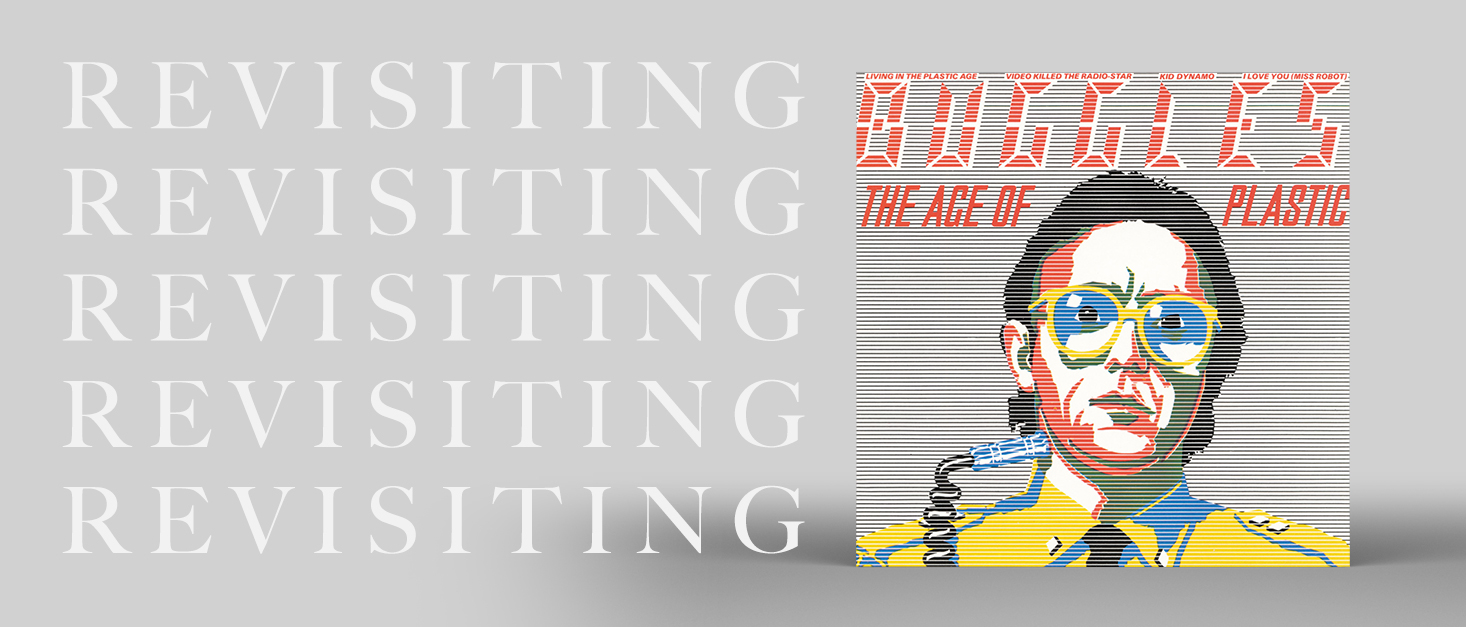
Revisiting: The Buggles - The Age of Plastic
In the latest in our series looking at classic albums from decades past, we reflect on The Buggles’ electropop debut – an innovative album that ushered in the sound of a new era
Tags: Music,Trevor Horn was once described as “the man who invented the 80s”. He produced some of the decade’s biggest bands, and was the creative force behind ZTT Records, a label that brought ABC, Propaganda, Art of Noise, Seal and 808 State to fame. He worked with Yes, George Michael, Frankie Goes To Hollywood, and The Pet Shop Boys, among others, and oversaw production on several of the era’s defining tracks.
Before he became one of pop’s most in demand producers, however, he was best known as one half of The Buggles, the group behind ‘Video Killed The Radio Star’.
Released in 1979, ‘Video Killed The Radio Star’ was The Buggles’ debut single. It was also the first track ever to air on MTV when the channel launched on August 1, 1981. It was a huge commercial hit, reaching number one in 16 countries, and it played a major role in popularising the electropop genre.
The track was taken from The Buggles’ debut album, The Age of Plastic, which was released a few months later in January 1980. Reflecting
on the record, Horn later recalled: “I had a kind of vision at the time, sort of Vince Hill meets Kraftwerk…. I wanted to make electronic records that work in the mainstream. It was hard to compete with all the big bands of the 1970s, so you had to come up with something fresh to compete with them.”
“With its clever production tricks and excellent audio quality, it sounded highly avant garde”
The Age of Plastic is a sophisticated, melodic and multilayered pop production, with huge appeal for fans of the genre. With its clever production tricks and excellent audio quality, it sounded highly avant garde at the time of its release – a reflection of Horn and the production team’s talents. It also felt wilfully innovative – a challenge, perhaps, to pop’s established order. As Horn once remarked, “It was the start of a new era in recording, one where we could do anything with sound.”
Alongside its cutting-edge production, The Age of Plastic featured some surprisingly accomplished songwriting. Although Horn played this side of things down at the time – concept albums weren’t exactly the height of fashion in the era of punk and new wave – his later remarks revealed just how seriously he took the writing process.
“I think lyrics are incredibly important,” he said in 2018. “So much of the way that people write these days, is that they write music over beats or programs. I think it’s better if you write starting from a lyric, because a lyric will take you somewhere different…. If you write just backing tracks, you just end up writing eight bar phrases or four bar phrases, that kind of stuff. But if you come up with an unusual lyric, you might do all kinds of things to accommodate that.”
“The lyric writing is surprisingly mature … feeling erudite yet world-weary and laced with nostalgia”
Thematically, The Age of Plastic’s lyrics conjured up scenes of a dystopian future, where the low tech world of the 1970s had been replaced byby cyborgs, robots, mass surveillance and stultifying conformity. Horn’s fellow Buggles band member Geoff Downes characterised the album as "science fiction music”, and there are certainly shades of JG Ballard’s The Drowned World, with a chaotic breakdown of civilisation that occurs in the future, and people remembering the faded glories of the past. The album’s title refers to Horn’s concept of The Buggles as a ‘plastic band’, made up to create disposable pop music.
The album’s four singles, ‘Video Killed the Radio Star’, ‘The Plastic Age’, ‘Clean, Clean’ and ‘Elstree’ are all wonderfully catchy. The remaining album tracks are no less memorable, with ‘I Love You (Miss Robot)’, ‘Johnny (Riding on the Monorail)’ and ‘Astroboy’ all having great ear-worm potential. The lyric writing is surprisingly mature for the then 30-year-old Horn, feeling erudite yet world-weary and laced with nostalgia. This slightly dour lyrical tone contrasts with the music, which is packed with drama, drive and dynamics.
“The team pushed the available technology as far as it would go in pursuit of a highly polished, futuristic and at times bombastic sound”
The Age of Plastic was a modest production that cost under £350,000 in today’s money. It was recorded at Virgin's Town House studio in West London, with Hugh Padgham, who later went on to work with Peter Gabriel and Phil Collins, on engineering duties.
Two 24-track Studer A80 analogue tape recorders were used, with stacks of effects units – delays, phasers, echo plates, compressors – and a Roland TR-808 rhythm composer as a baseline for each composition. The team pushed the available technology as far as it would go in pursuit of a highly polished, futuristic and at times bombastic sound.
Using a decent advance from Island Records, following the stellar success of the ‘Video Killed The Radio Star’ single, Horn was able to buy a lot of studio time to hone the album to sonic perfection
Several tracks featured vocalist Bruce Woolley, who left the band during the recording sessions to start his own group. The line-up also included Tina Charles – for whom Horn had once worked as a session bass guitar player – on backing vocals, and Hans Zimmer, who did some synthesiser programming.
“Tonally smooth, yet highly detailed and dynamic, it features powerful, impactful bass and widescreen stereo imaging”
The recording process offered Horn a perfect chance to polish his studio skills, and his love of creative and technological experimentation is evident in the finished product. “Back then, you didn’t go on a college course for record production, you had to figure it out, and get into a studio – and the only way you could do that was if somebody was paying for it,” he later recalled. “I had sort of four years of making demos for song publishers who gave me a lot of work, and that would get me into the studio – and [each time] I’d think, ‘this time I’m going to try this, this time I’m going to try that’. I was one of the first people – along with my friends – who started doing crazy things with sound.”
As well as a stellar recording and production team, the album’s line up included Bob Ludwig, who was responsible for the excellent mastering quality. The original 1980 LP release sounded superb, and was arguably one of the finest pop albums of the decade in terms of recording and production. Tonally smooth, yet highly detailed and dynamic, it features powerful, impactful bass and widescreen stereo imaging, with Horn’s trademark frilly stereo effects whizzing between the speakers, across an expansive soundstage. The original Island Records Compact Disc transfer that followed was also excellent: listeners can enjoy classic early analogue synthesisers like the Sequential Circuits Prophet 5 and Minimoog chiming away, allied to the tight, taut and dry bass guitar groove that underpins every song.
Given its significance as a record that introduced many music fans to electropop, and launched Horn’s production career, you could argue that The Age of Plastic deserves more critical acclaim – and commercial success – than it received. It was widely overlooked or dismissed by critics at the time, and peaked at number 27 in the UK album charts. Yet looking back now, it feels like a landmark moment in pop. It presaged many musical developments of the 80s, ushering in the sound of a new era, and remains a quirky and enjoyable yet highly technically accomplished piece of work.













